Allô! 👋
Hello! Welcome to the good food at home newsletter. If you're a new subscriber and would like to read previous issues, you can click here to find them chronologically or click here for an index of all newsletter recipes. To support the newsletter, get more recipes + access the full archive, feel free to upgrade your subscription if you can (it’s less than £1/week with an annual subscription, or free if you refer some friends, and always starts with a 7-day trial)!
If this newsletter has been shared with you and you'd also like to subscribe, feel free to hit the button below 💛
Happy last day of March, and welcome to the season’s first newsletter issue! Spring is here! At least, on the calendar, that is… Right now, for me, the current season feels more like Winter, Part II.

I can’t say that this weather bothers me all that much. I still have a few sweaters I’d like to knit before the snow days are over and, although the change in season here in southern Norway has felt slow this year, the days are indeed getting noticeably longer and warmer. Which reminds me, if you’re reading from Europe, Daylight Savings Time more likely than not started for you today (if you’re in North America and your clocks changed, you’ve already had two weeks to adapt)! Sorry about the lost hour of sleep …and other unfortunate consequences.
Anyhow, that being said, despite all the snow that’s been falling and the sun that hasn’t been shining, spring is springing and my seedlings are growing well. Growing food does absolute wonders not only for one’s cooking but also for one’s mood, and now that I’ve started seriously doing it, I don’t think I’ll ever be going back. I’ve only planted a few herbs and sprouts this year as I still don’t know where I’ll be this summer and can’t quite commit to a full garden, but even so, just a few fresh tendrils of green are enough to get me excited for the warmer-weather cooking to come.
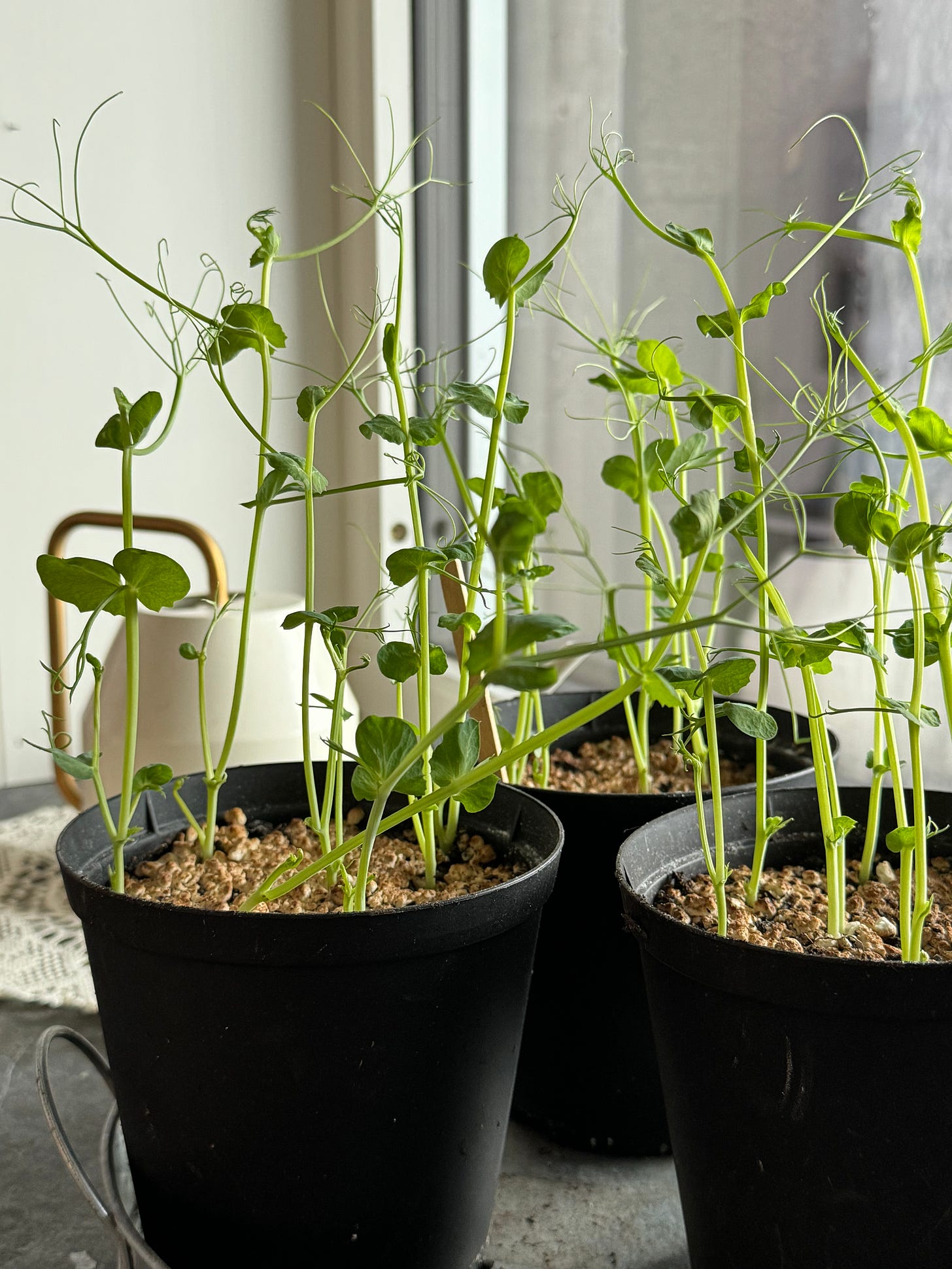
As winter transitions into spring and the days gets brighter, I find that so too do our moods, lifted by the quiet-but-confident knowledge that this fledgling greenery is only just the beginning. Indeed, lighter days also mean noticing things that easily went unnoticed during the dark season (how could I not see that my windows were so filthy) — time to round up the bulky winter attire, empty kitchen drawers so as up to vacuum up their crumbs (and dispose of anything that no longer belongs), and swap out the heavy duvet for something more lightweight and spring-appropriate.
Beyond giving everything a good scrubbing and airing out (I already alluded to spring cleaning in the last newsletter, but here’s a to-do list if you’re looking for some direction), the arrival of spring might also tempt us to freshen up our home decor and personal belongings. Assessing our closets and living spaces to donate clothes and other items that haven’t been used much (or at all) since last spring is always a good idea, and so too is shopping secondhand before running off to acquire something brand new*. Not only is this often a very planet- and community-friendly approach, it often brings with it a lot more character and charm to our homes. Perfect for a springtime freshening up.
*new things in sensible quantities can of course be nice too, though — especially if crafted locally or handmade by someone you love (this includes you!)
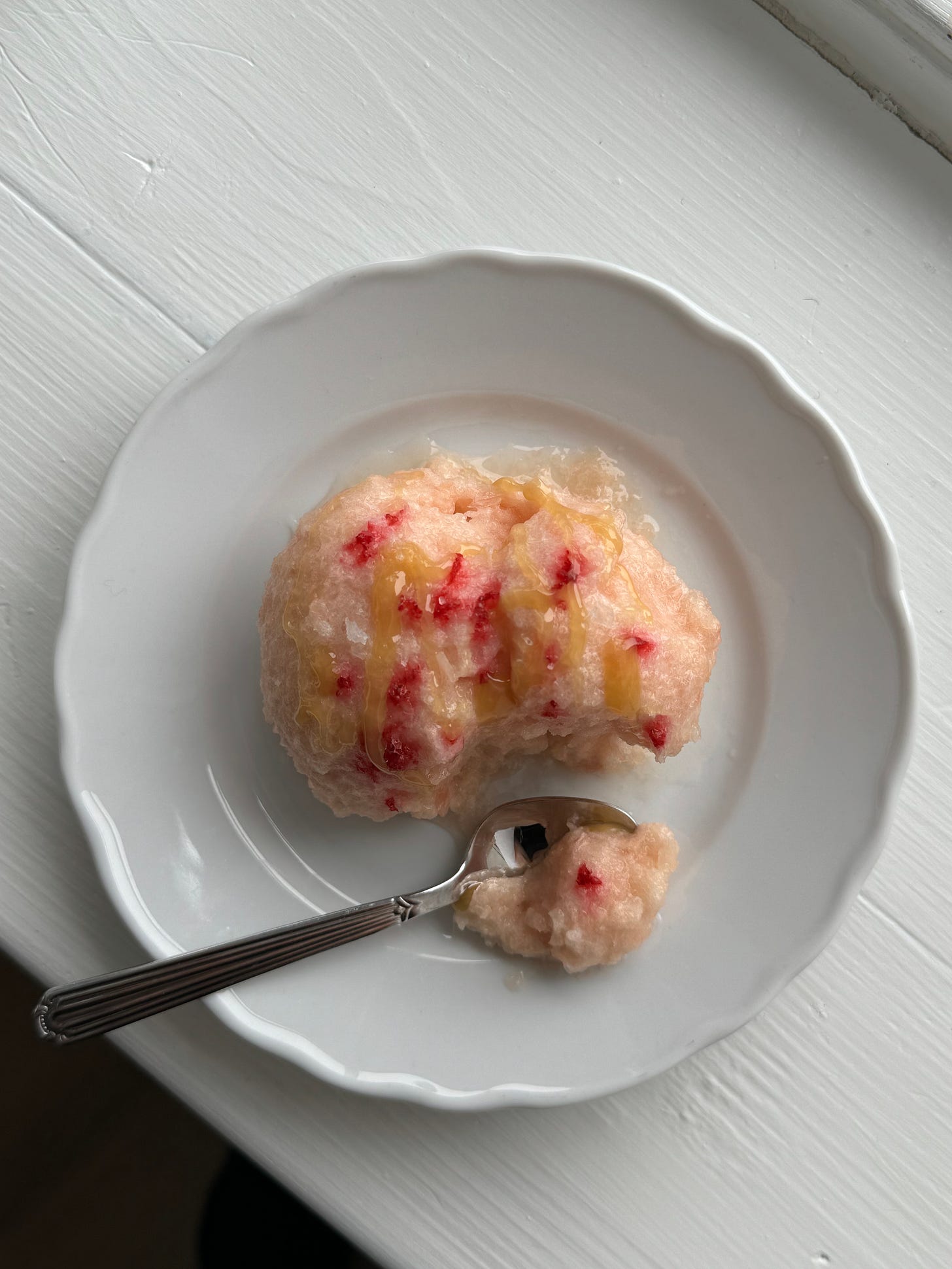
Speaking of fresh things, today’s recipe (pictured above) is one that combines the season’s snow and citrus into something quite refreshing indeed. In addition to that, you’ll also find in this year’s third issue of good food at home some recent and popular early spring recipes from the newsletter and site, as well as a few pretty cool links to new and interesting articles and stories relating to food and public health. As always, I hope you’ll enjoy!
Just a heads-up: some of the recipes linked below are for paid subscribers only. You can read about the produce featured in each post for free, but if you’d like to access the whole recipe + Q&A, I do invite you to subscribe to the seasonal sundays section of the newsletter, where every week we take a closer peek at produce at its peak — with a short introduction, a recipe, and a (sometimes related) cooking Q&A (it only costs £1.25 per week, or 96p/week with an annual plan, and the first 7 days are always free). Upgrading not only lets you access all newsletter recipes + the full archive, it also supports all the work that goes into getting this newsletter and other recipes and writing (on Instagram and the website) to you 💛
Happy reading (and do stay dry — April showers are coming!),
👋simone
early spring recipes
✨
I normally like to compile a list of peak produce at the turn of every season, but seeing as not much is in season at the moment, I decided to put that off until next month’s newsletter issue. In the meantime, feel free to peruse these recent and popular seasonally appropriate recipes from the newsletter and the site.
beetroot sauce (for grains, salads & pasta)
A beetroot sauce for beet lovers and doubters alike — enjoy with pasta, tossed through grains, or as a dressing for hearty salads. Perfect for using up those cold-stored beets you still wanna eat!
a radicchio & walnut pasta
Chicories and bitter leaves can be too much to handle for some, but this creamy carbonara-esque recipe with fried walnuts and caramelised shallots is bound to charm radicchio sceptics and fans in equal measure.
beans vinaigrette
Meltingly soft leeks on a bed of creamy white beans. Feels like it maybe shouldn’t work, but the textural contrast between the starchy cannellini beans and the gently fibrous leeks really does make each and every bite a real delight.
blood orange chocolate cake
Full disclosure: it’s a chocolate beetroot cake, and it is delicious. I think the best chocolate cake I’ve ever tasted. Try it with or without the caramelised blood orange topping — I promise I won’t be offended.
savoury sage scones
Made with cheddar and chives and everything that jives with that oh-so-classic combination, these cheesy sage scones are perfect for sharing (if you care to share them at all).
For more springtime recipes and ideas, feel free to check out the newsletter recipe index, the website, and Instagram.
recipe for a shortcut citrus sorbet 🍧
This dessert is so fresh and fun, I’m honestly so excited to finally be able to share it with you. I think the idea first came to me in part from re-reading the start of
’s A Year of Good Eating: The Kitchen Diaries III.When I was in Oslo last month, I had some time to kill so popped into the big downtown Deichman library (if you’re ever in Oslo, do check it out — it is a real gem of a third place) and inevitably found myself drawn to the cookery section.

Around the time I was thumbing through this book, reading about grey skies and citrus snow, I was also plotting the next few issues of seasonal sundays. Brainstorming for what to do with the pomelos I’d only just stumbled upon at the grocery store led me to thinking up this salad recipe, as well as the one you’re about to read below.
The thought of simply blending up frozen segments of citrus is very appealing to me, because it means I can peel and freeze some oranges or pomelo or lemons now, when they’re still very good, then enjoy them again later in the spring or the summer when it’s hot and muggy and all I want is something refreshing and reminiscent of a good citrus season not long bygone†. Little effort for much (delicious) reward, just how I like it.
†it also reminds me of the slush that inevitably floods sidewalks and streets every spring as our winter days thaw away — not as poetic, but just as nostalgia-inducing if you ask me
•••
It’s a little late in the year for some citrus fruits, but other varieties truly come into their own with the arrival of spring. If pomelos are no longer available or looking so hot in your area, look for sweet oranges like late-season navels and Valencias, as well as tangelos, grapefruit, lemons, cara cara oranges or tangerines with firm, smooth, and vibrantly-hued skins, a heavy weight for their size (this means they’ll be juicy!), and a plump, attractive shape (usually indicative of good flavour and full maturity).
pomelo slush (AKA shortcut citrus “sorbet”)
makes around 4 large or 6 medium scoops, depending on serving sizes
INGREDIENTS
FOR THE “SORBET”
• pomelo (or other citrus fruit), 500g — firm, plump, fragrant and heavy
• honey, up to 4 heaped Tbsp — alternatively, make a sugar syrup by dissolving 100g of sugar into 100ml of water over medium-high heat
FOR THE TOPPINGS
• optional: frozen berries, 2 per scoop
• optional: pistachios or other nuts, 1 per scoop
• optional: dark chocolate, ½ a square per scoop
• optional: extra virgin olive oil
• optional: sea salt
• optional: crushed dried chili flakes
note: some citrus have flavoursome membranes or mild soft piths in between segments, while others have tough membranes and bitter piths (and some come with lots of seeds too) — be sure to peel away and remove anything you wouldn’t want to eat in a sorbet before freezing!
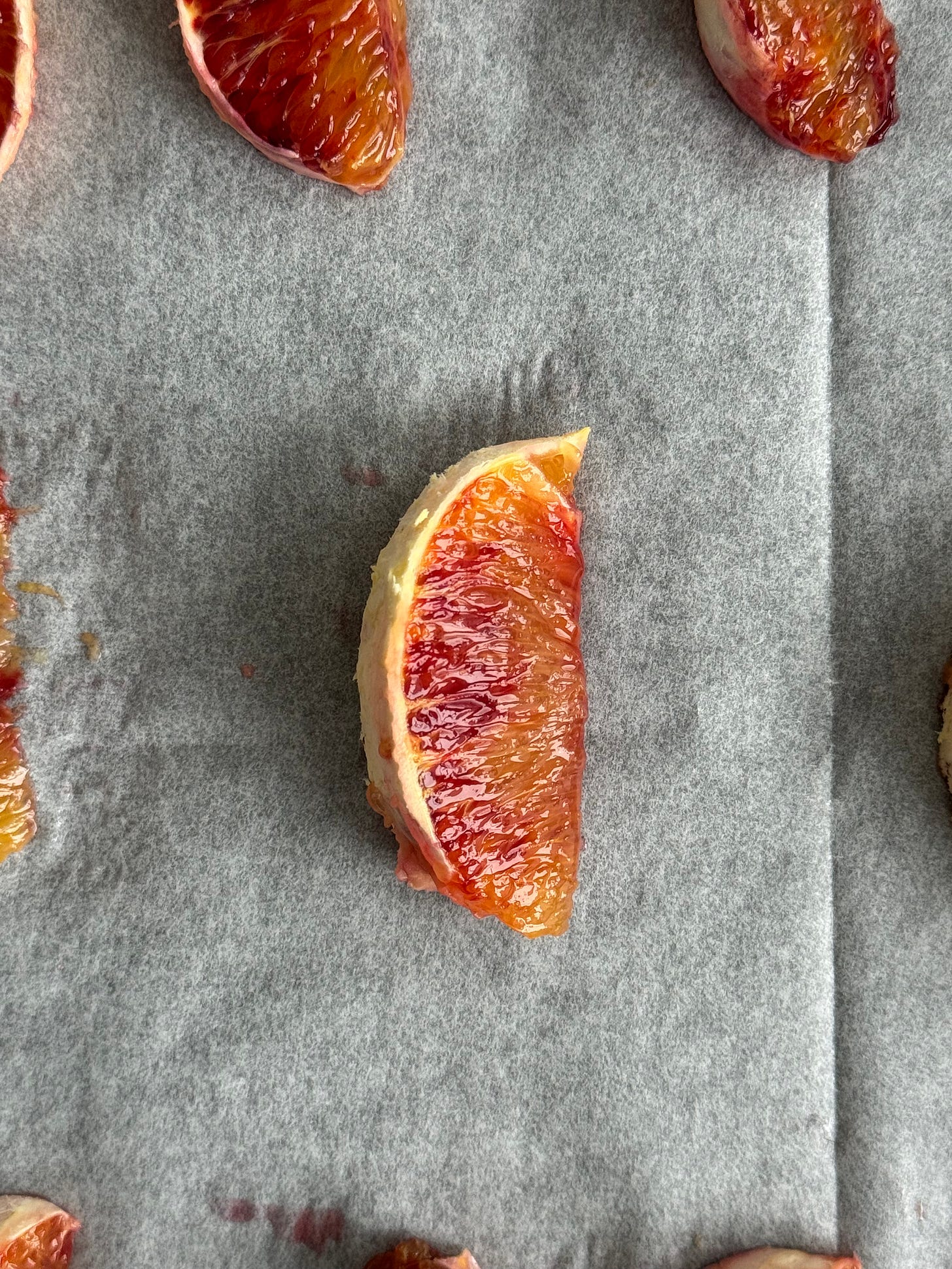
METHOD
1. Peel and segment your chosen citrus. If using pomelo or lemon, segmenting the fruit with a knife may be the quickest and easiest way to remove the flesh while leaving the membranes and pith behind. Taste a segment to get an idea of how sweet or acidic the fruit is, and to give you an idea of how much you might like to sweeten it later.
2. Place the segments on a parchment-paper lined sheet tray, making sure each piece has some room around it, and freeze in one layer for at least six hours, or up to overnight. Transfer to a resealable bag or container and store in the freezer for later if not ready to use right away.
3. Add the frozen citrus chunks to a food processor, and whizz on increasingly high speed until the pieces go from looking like icy crystals to crumbly wet sand to clumpy slush. This may take up to 15 minutes.
4. Give the blend a taste, and add honey (or sugar syrup) to taste‡. Note that cold things don’t taste as sweet as warm ones, so taste again after sweetening and adjust accordingly if necessary.
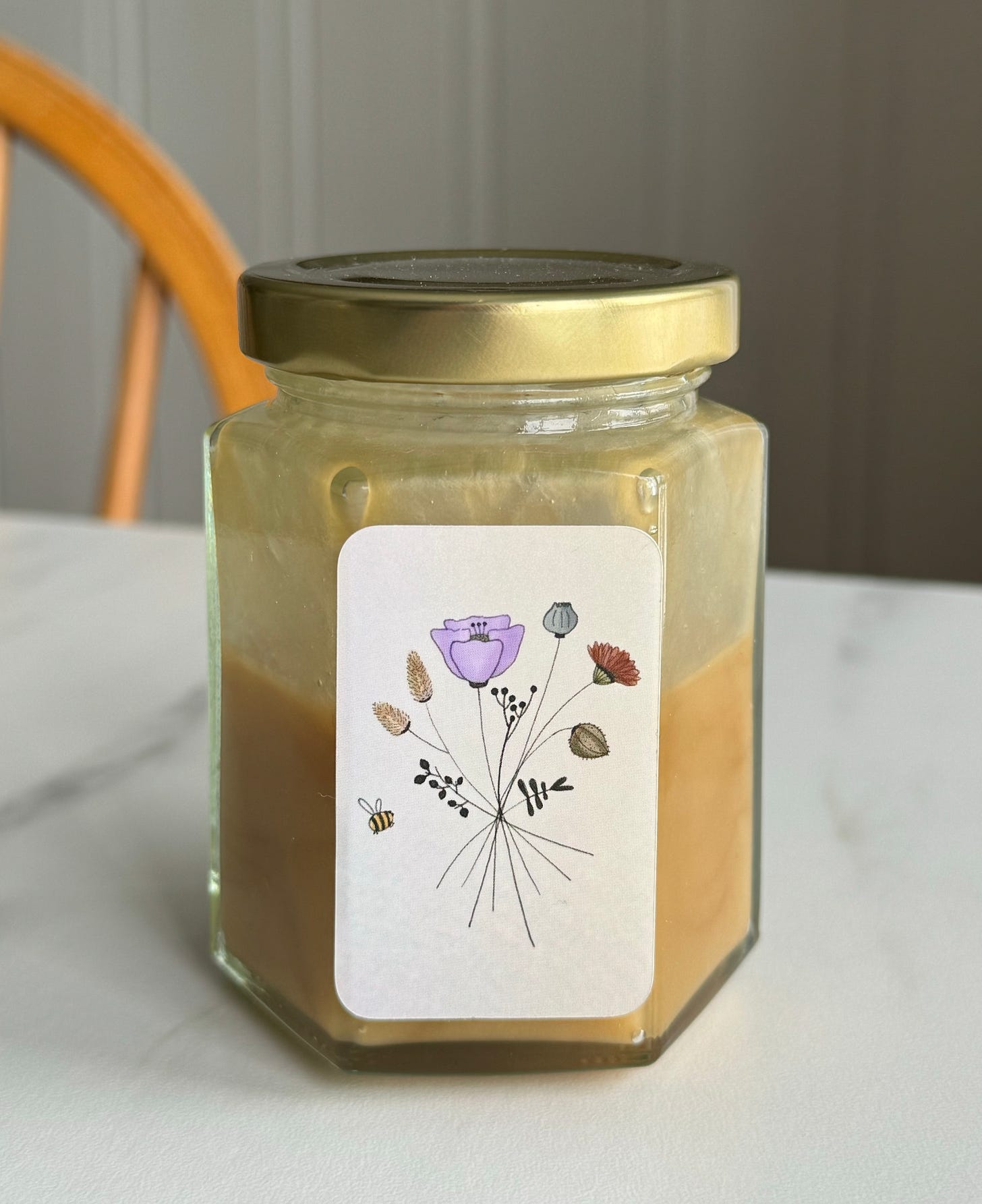
‡you could probably also add a shot of booze here, but I’ve only just thought of this now and haven’t tested it yet; my guess is rum and prosecco/champagne would make good candidates, but as I don’t really drink, you may want to take this idea with a flake of salt
5. Top with:
• a drizzle of honey
• zested frozen berries
• chopped or microplaned nuts
• shaved dark chocolate (use a vegetable peeler to get those fancy curls)
• a drizzle of olive oil
• a light crunching of flaky sea salt
• a few crushed dried chili flakes
…or any combination of the above. Personally I’m a big fan of berries + honey + pistachios, as well as olive oil + sea salt + dark chocolate.

Freeze any leftovers right away in an airtight container, and allow to soften slightly at room temperature before serving again.
Best enjoyed on a warm sunny day, outdoors if possible, with childlike enthusiasm and delight 💛
last, but not least:
the public health corner 🔗
In case you didn’t know, public health is my jam (more on that here and here) — it informs everything I do! And, as always, I like to leave you with a few parting links relating to the topic, as food for thought:
📺 ONE VIDEO
“Healthy food is a luxury”, Food, Farming, and Countryside Commission
🗒️ ONE ARTICLE
‘The cost of dealing with disease is growing all the time’: why experts think sugar taxes should be far higher, The Guardian
🎧 ONE PODCAST EPISODE
What constitutes a healthy relationship with food?, ABC Radio Melbourne
📘 ONE BOOK
A Year of Good Eating: The Kitchen Diaries III, Nigel Slater
p.s. I usually have a hard time just picking one of each so, in case you're hungry for extra helpings, there's plenty more where that came from!
That's all from me this month! See you again very soon 💛





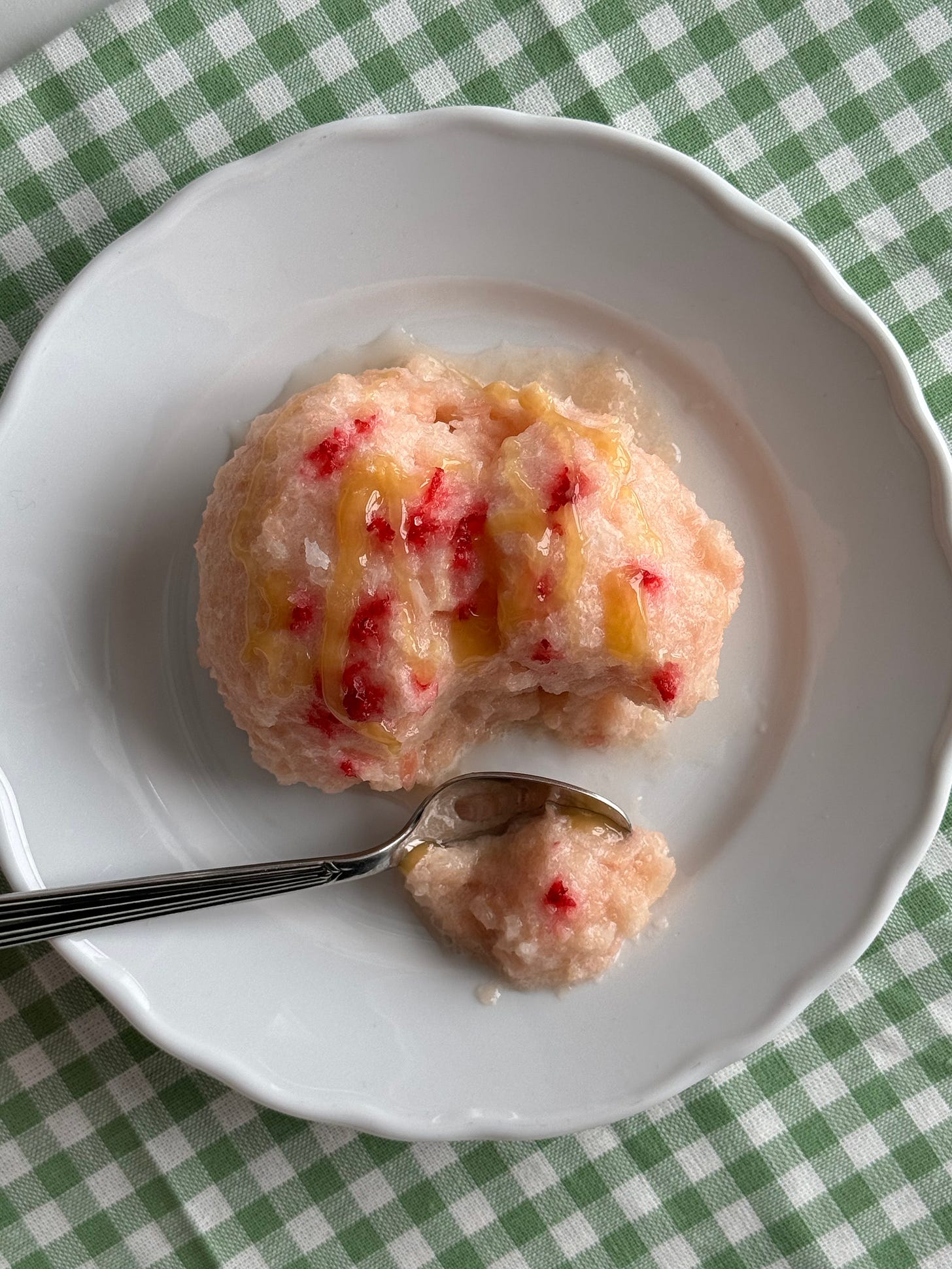





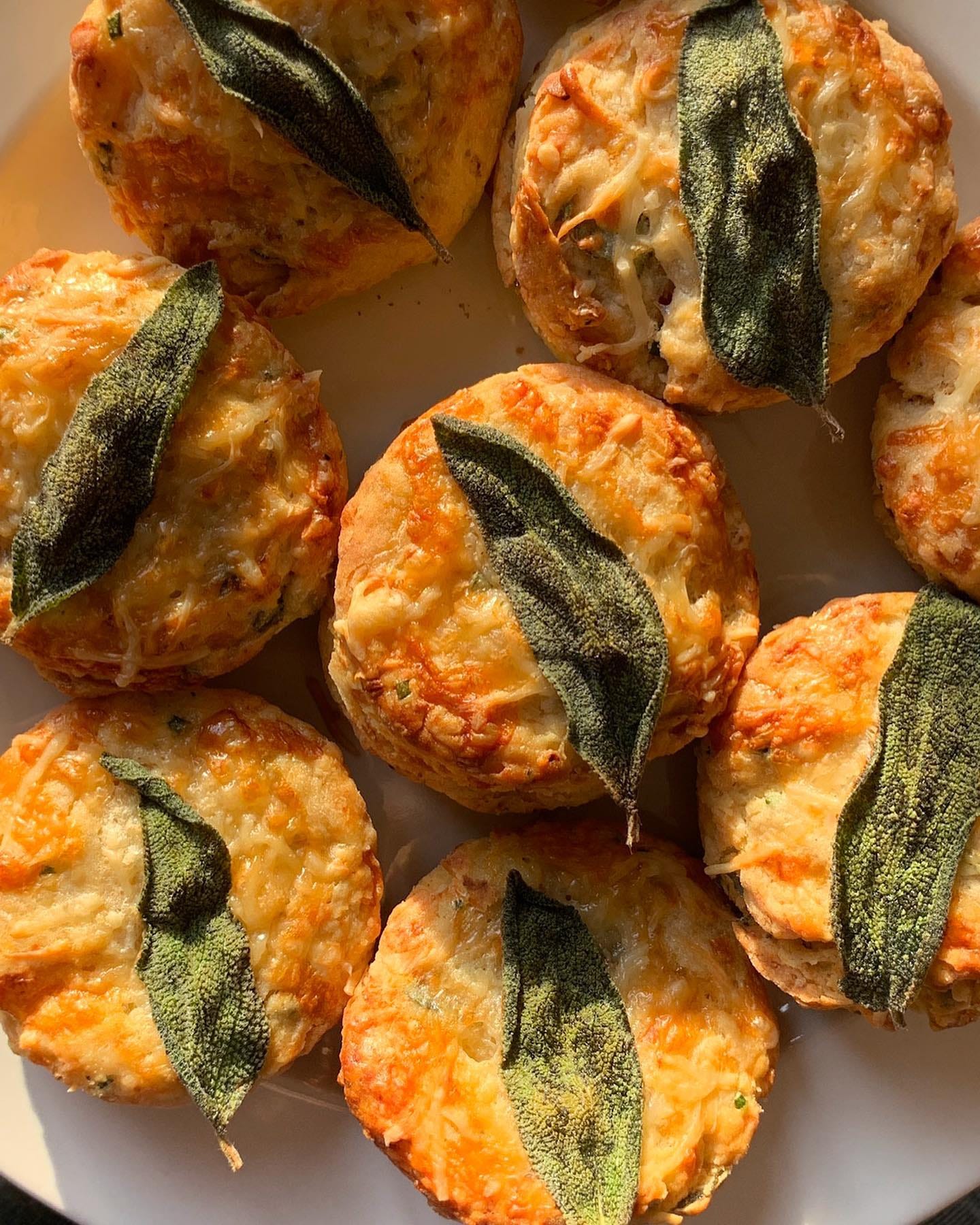
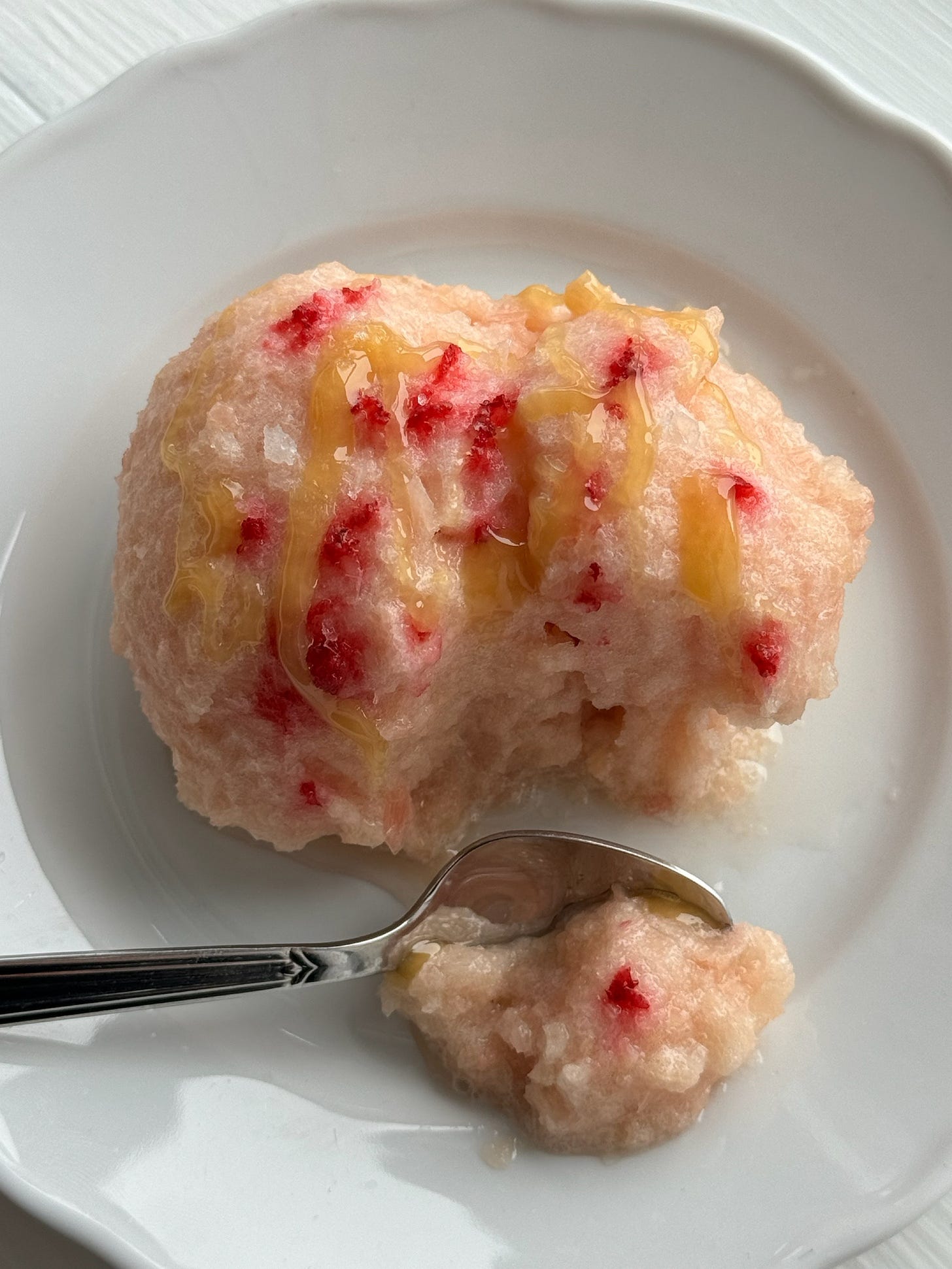

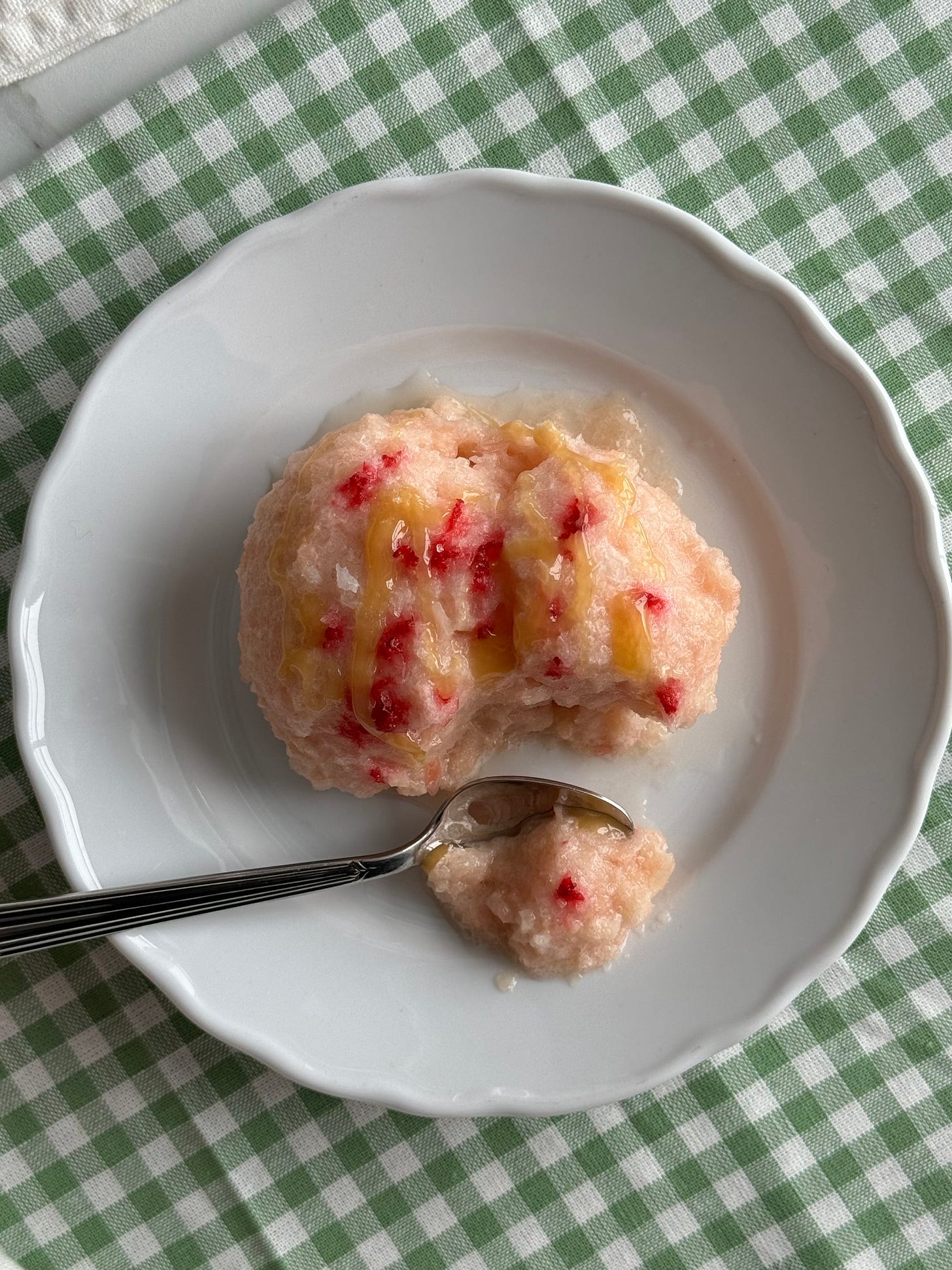

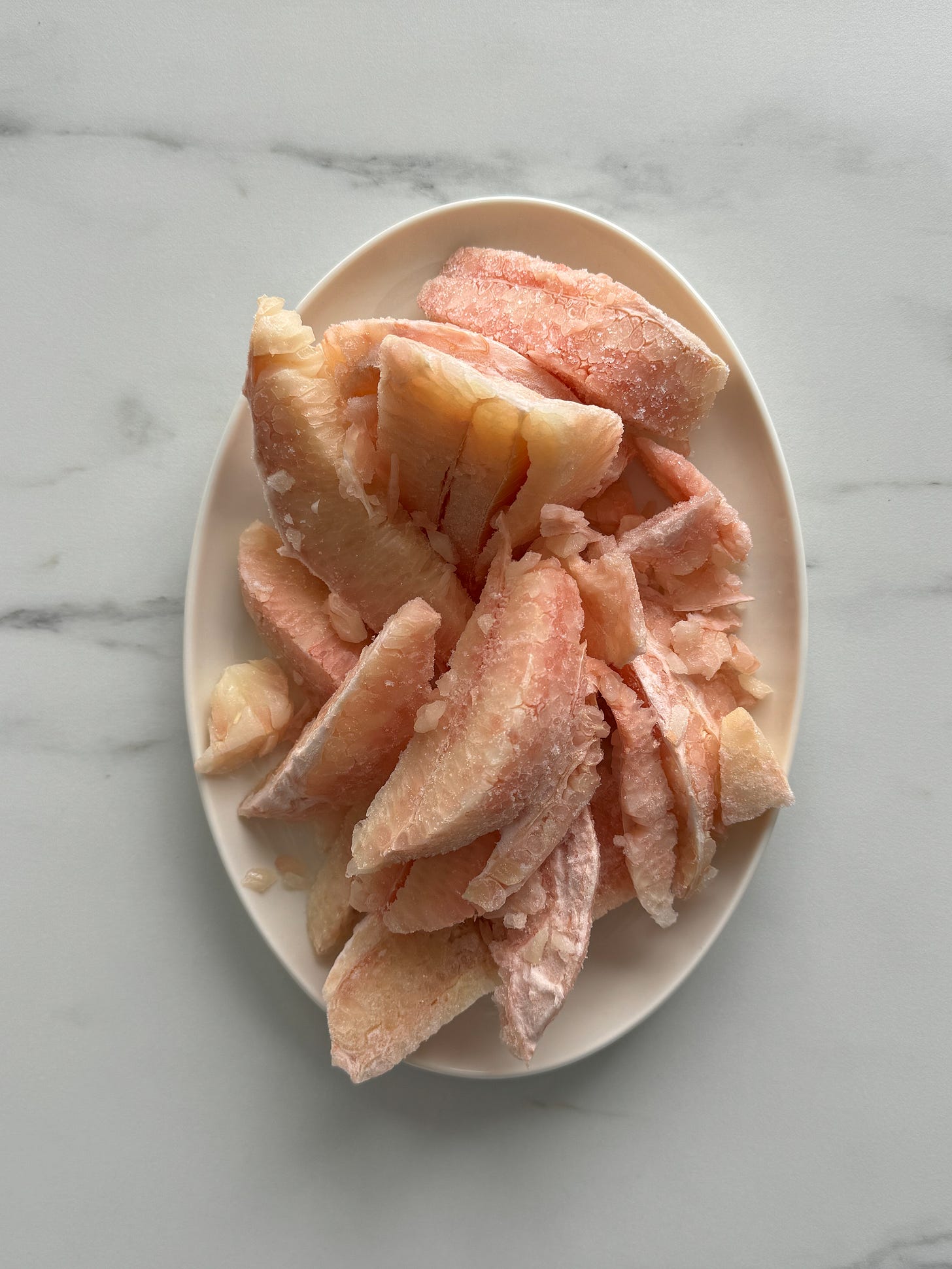


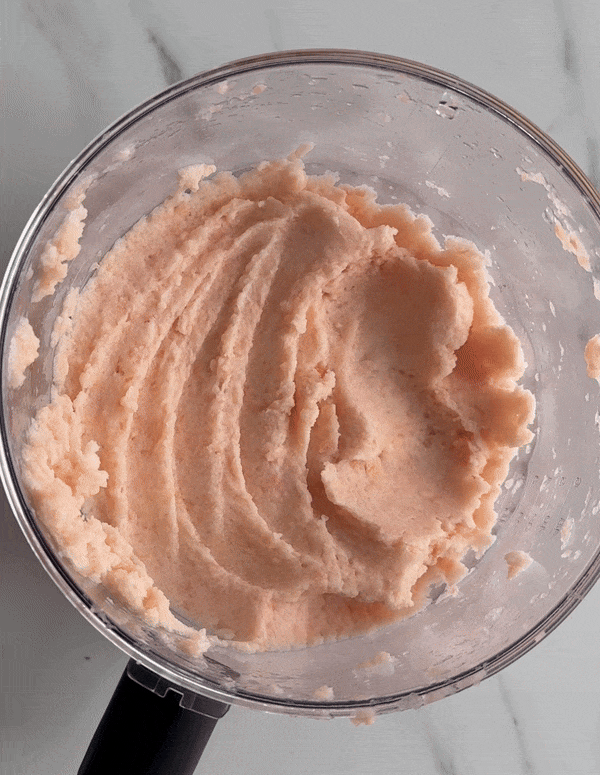




Oh deer, looks like you've had a great March!
So many gorgeous things!